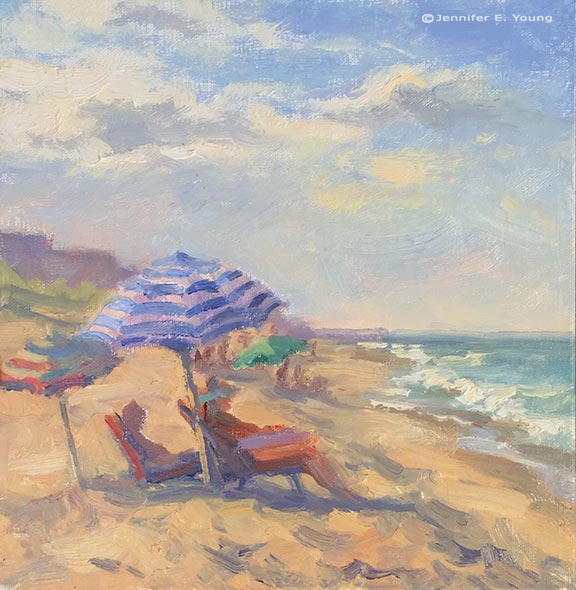Plein Air Crush
/This week I am coming down off of an exciting weekend in Floyd County, Virginia, where I participated in the inaugural plein air event called Plein Air Crush. In total there were about 19 artists participating over the course of the weekend, with judging and awards taking place on Sunday. This year the event centered around Chateau Morrisette Winery, which has some interesting architectural features, lovely gardens and vineyards, not to mention a fine restaurant and some pretty tasty wine. It sounds luxurious doesn't it? But keep in mind I was not doing much sipping. Instead I was schlepping; schlepping a bunch of art gear and standing for hours, out in the elements. It was hard on the body but rewarding for the spirit, and I had a good time painting the new-to-me scenery and meeting other artists.
We converged on Friday evening for a little meet and greet, but the painting portion of the event kicked off on Saturday, where we faced the threat of rain and some pretty dark skies. Painting in these conditions is really challenging because the value range is very limited and the light fairly flat. So I decided to set up in the vineyard where I found opportunities for some strong linear elements and soft edges that provided interesting compositional options:
 "Vineyard in Gray Light", oil on panel, 9x12"
"Vineyard in Gray Light", oil on panel, 9x12"
In the afternoon I decided to venture a little further afield to paint a view of Buffalo Mountain:
 "Buffalo Mountain View", oil on linen, 8x8"
"Buffalo Mountain View", oil on linen, 8x8"
Sunday was the quick draw. It was incredibly windy. Worse than clouds and rain, wind conditions are a nearly impossible situation for the plein air painter because of the danger of having your entire setup topple and/or take flight. The wind at the winery required that most painters seek a shelterd place unless they had a good way of weighting their setup (which I didn't).
Down at the vineyard though it was much warmer and virtually windless. I hadn't really planned on doing another vineyard piece but I figured it was my best option for success when we had a time limit.
 "Sunlit Vines", oil on linen, 9x12"
"Sunlit Vines", oil on linen, 9x12"

We had three hours for the quick draw (which is actually pretty generous). At the alotted time we had to deliver our quick draw painting and the other works we had completed during the event and set up for judging. Steve Doherty, artist and editor of Plein Air Magazine was the judge. I didn't win any awards but it was cool to meet him and I learned a lot about my painting, and even a bit about myself as well.
 Setting up for the judgement back up at the winery
Setting up for the judgement back up at the winery
 Here I am happy and tired. The wind blew up a bunch of dirt on my paintings. I have managed to get most of it off of the two vineyard pieces, but the Buffalo Mountain one was painted really thickly and I don't think that stuff is going to budge. Oh well...that's plein air for you! It was good winery soil at least.
Here I am happy and tired. The wind blew up a bunch of dirt on my paintings. I have managed to get most of it off of the two vineyard pieces, but the Buffalo Mountain one was painted really thickly and I don't think that stuff is going to budge. Oh well...that's plein air for you! It was good winery soil at least.
I came home to a messy house and a bunch of dirty laundry, but it was a fair trade for having had time off from mommy duties to do my thing for a whole weekend. (Thanks honey!) :-)





 "Morning Surf"
Oil on Canvas, 9x12"
Contact me to purchase!
"Morning Surf"
Oil on Canvas, 9x12"
Contact me to purchase!







 "Morning Wash", Venice
Oil on Linen, 16x12"
"Morning Wash", Venice
Oil on Linen, 16x12"





















 "Morning in Gray and Gold"
Oil on Linen, 12x16"
"Morning in Gray and Gold"
Oil on Linen, 12x16"









